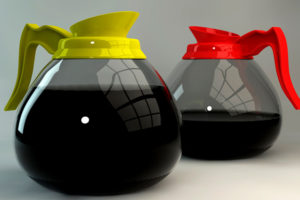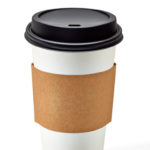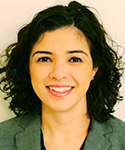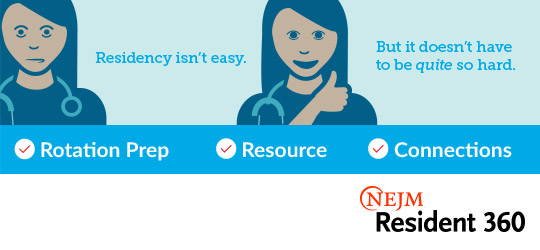September 19th, 2018
Coffee and the State of the Hospital
Ellen Poulose-Redger, MD
I think you can tell a lot about how things are going in a hospital based on the amount of consumption of coffee by its employees. Visit the Starbucks, Au Bon Pain, Roasterie, Einstein Brothers, or whatever coffee shop inhabits square footage in your hospital, and I’d venture to say that you can take the pulse of the hospital. Lots of large coffees to go? It’s either just about shift change and people are rushing into their jobs for the day (or night), or the hospital is bursting at its  seams and everyone is go-go-go. Is someone ordering an Americano? He or she must know that the dregs of the day’s coffee are all that’s left and is instead gambling that a freshly pulled espresso shot is a safer bet. A latte? That lucky person might have a little time to spare and might even sit down to enjoy his or her drink right there instead of hurrying back to the floor/clinic/unit/OR. How about the counter with the milks and sugars — are all the sugar or sweetener packets gone? Must be insanely busy. Milk or — gasp — half-and-half all gone? The shop’s been busy, so much so that they’ve run out of the dairy product within the allowed 2-hour serving time. You see — if you happen to have time to take note of these things — there’s a lot to be observed.
seams and everyone is go-go-go. Is someone ordering an Americano? He or she must know that the dregs of the day’s coffee are all that’s left and is instead gambling that a freshly pulled espresso shot is a safer bet. A latte? That lucky person might have a little time to spare and might even sit down to enjoy his or her drink right there instead of hurrying back to the floor/clinic/unit/OR. How about the counter with the milks and sugars — are all the sugar or sweetener packets gone? Must be insanely busy. Milk or — gasp — half-and-half all gone? The shop’s been busy, so much so that they’ve run out of the dairy product within the allowed 2-hour serving time. You see — if you happen to have time to take note of these things — there’s a lot to be observed.
 How much coffee does a residency program go through during a conference? Are the residents burning the candle at both ends while on service? If so, we’ll go through a pot of coffee in 5 minutes as they sit down for afternoon conference. [My co-chiefs and I have carried on the tradition of providing coffee with conference — there is no excuse for sleeping if you have access to caffeine.] Things have been a little bit calmer on the floors and they have a few minutes to decompress? We might need to fire up another pot of coffee after conference, just to give everyone a few more minutes to sit together and chat. How fast are we going through the half-and-half or almond creamer? Are all of the caffeine lovers on service at the same time, or has it been an unusually busy time and everyone’s reaching for a cup during conference? Or perhaps there are days when our “proprietary blend” wasn’t that popular, and most of the coffee went down the drain. (I will never again buy French vanilla coffee. Sorry, everyone.) Even for those who don’t drink coffee, I think just having it there and knowing that someone got there early to set it up and set out the accoutrement for serving shows that we, the nebulous chiefs behind the email account, care. We want our residents to know that yes, the days are long, and the pages are nonstop, but there’s a hug in a cup waiting for them.
How much coffee does a residency program go through during a conference? Are the residents burning the candle at both ends while on service? If so, we’ll go through a pot of coffee in 5 minutes as they sit down for afternoon conference. [My co-chiefs and I have carried on the tradition of providing coffee with conference — there is no excuse for sleeping if you have access to caffeine.] Things have been a little bit calmer on the floors and they have a few minutes to decompress? We might need to fire up another pot of coffee after conference, just to give everyone a few more minutes to sit together and chat. How fast are we going through the half-and-half or almond creamer? Are all of the caffeine lovers on service at the same time, or has it been an unusually busy time and everyone’s reaching for a cup during conference? Or perhaps there are days when our “proprietary blend” wasn’t that popular, and most of the coffee went down the drain. (I will never again buy French vanilla coffee. Sorry, everyone.) Even for those who don’t drink coffee, I think just having it there and knowing that someone got there early to set it up and set out the accoutrement for serving shows that we, the nebulous chiefs behind the email account, care. We want our residents to know that yes, the days are long, and the pages are nonstop, but there’s a hug in a cup waiting for them.
 Let’s go back to the coffee shop in the hospital — maybe it’s midafternoon, and a senior resident or fellow or attending has taken an intern there for a quick feedback session. (Please, everyone, do sit down with your learners to give and receive feedback!) Maybe it’s 6:30 am and the senior resident is buying five specialty drinks to celebrate the end of a block with her interns and students. Maybe it’s 9 pm and there’s a couple there, both on call, stealing a few minutes of time with each other before heading back to their respective domains. There is so much to observe in just that little area. That shop is a measure of the pulse of the hospital, if we just look up from our smartphone long enough to see what is going on.
Let’s go back to the coffee shop in the hospital — maybe it’s midafternoon, and a senior resident or fellow or attending has taken an intern there for a quick feedback session. (Please, everyone, do sit down with your learners to give and receive feedback!) Maybe it’s 6:30 am and the senior resident is buying five specialty drinks to celebrate the end of a block with her interns and students. Maybe it’s 9 pm and there’s a couple there, both on call, stealing a few minutes of time with each other before heading back to their respective domains. There is so much to observe in just that little area. That shop is a measure of the pulse of the hospital, if we just look up from our smartphone long enough to see what is going on.




Dear Ellen,
There isn’t a coffee pot in the Emergency Department???
I worked in the ER as a volunteer before I went to medical school.
One of the first things I learned was how to fix coffee in the Bunn coffeemaker.
I already knew how to use a Bunn because I worked in a resort town cafe as a high school student, but there are different ways to make coffee.
I learned a lot from the nurses as a volunteer and later as a student.
When time came to choose residents, the nurses told the director of the program that they would go on strike if I was not accepted!
Thank God for great nurses and for caffeine!
Anne
Hi, Anne!
I wish there were coffee pots for staff in all of the various department and unit staff lounges, but unfortunately, there aren’t at the hospital that I am at right now. But, as a chief resident, we’ve secured a coffee pot for the VA and our university hospital and make a fresh pot for residents at every conference.
Thank you, and your fantastic nursing colleagues, for all that you do every day!
Quality of coffee in Dr’s lounge is a good measure of how the hospital administration values physicians
If your facility, hospital, medical center … asks the staff to start bringing their own coffee, start looking for another place to practice, finish residency,… Immediately!
The doors are closing soon. Been there
Good article and observations. There should be a companion piece about the midnight hamburger for students and residents on call in tertiary care hospitals. This was a time to reflect, enjoy the commaderie and recalibrate for the remainder of the long night.
I have always been more of a chicken fingers at midnight kind of gal, but yes! I agree–observational study on the food choices and overall mood of the staff?
The hospital I work provides best coffee free of charge,.
I was surprised when one of the supervisor for the contract Physians emailed to the doctors “ u need to see and discharge pts before u go to the doctors lounge to get coffee “
I worked as a ER nurse before med school. At an interview for my final nursing job before med school, I was asked to make a pot of coffee. Sprinkled a little salt on top of the grounds to break up the grease that floats on the top and got the job. That job helped me to get into med school. I’m forever grateful to all the nurses and docs I worked with there.
Dear Ellen,
This is a highly irresponsible post, advocating the use of psychostimulants, such as caffeine, by medical staff, who should be having brains ready to help. Here, you are endangering their health, as well as that of patients. Hopefully, you decide to become a good physician, rather than one that does not value health above all else. It may be that you are not educated on neurology, despite having a neurologist grandfather. Please try harder! We have faith that you can become better and actually write content that serves humanity and uplifts it rather than continue damaging it, as a certain retina specialist you know, and his mother via her profession, has for years. Caffeine is not good for the brain.
(You can wear eShakti customized dresses; they will look good on you. You were the first thought on my mind when I saw the site.)
Wish you all the very best!
Regards,
Kate P, MD, FACS
Great!